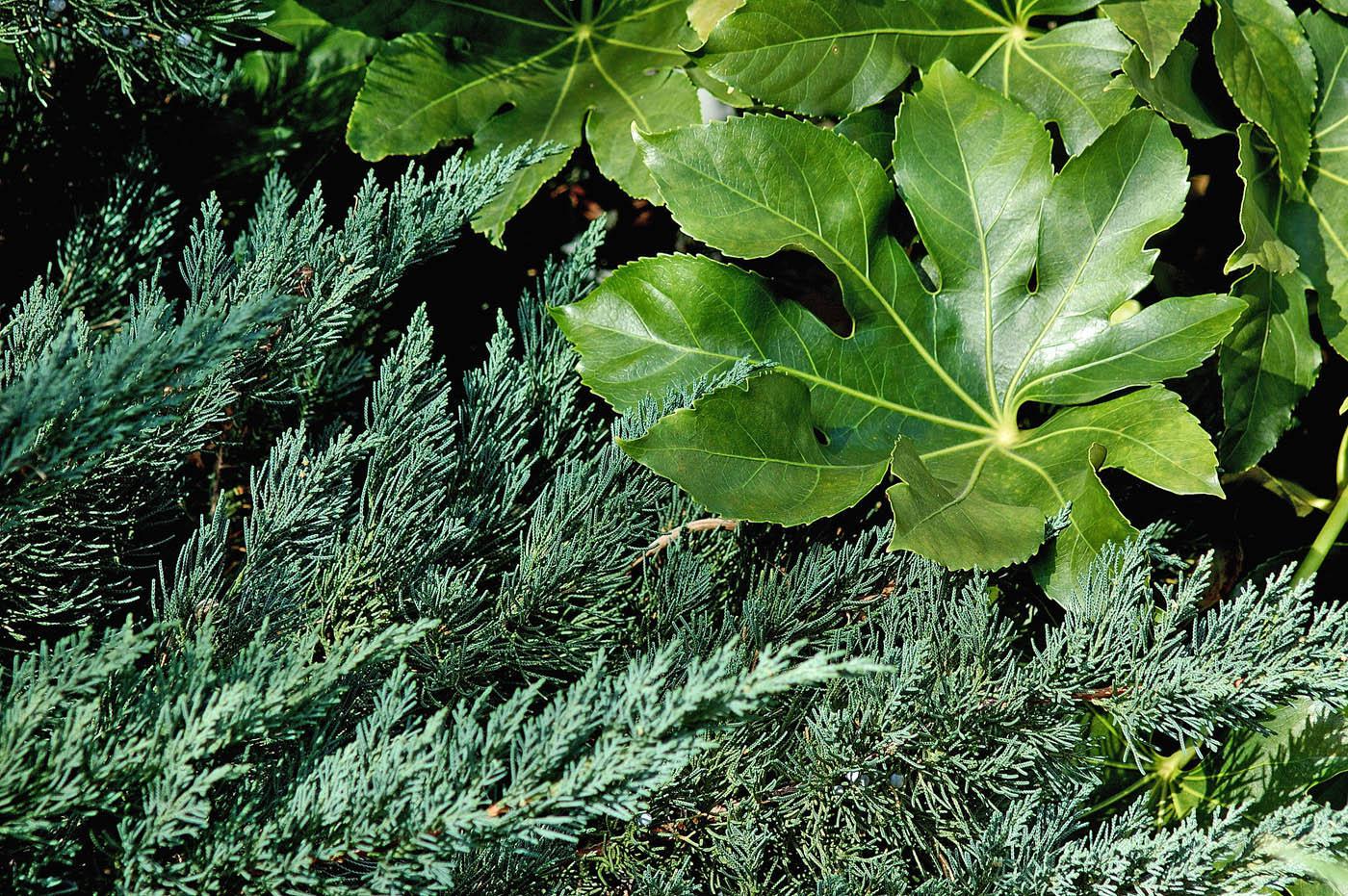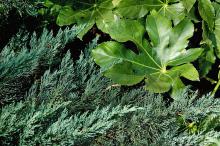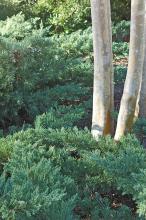Information Possibly Outdated
The information presented on this page was originally released on February 12, 2009. It may not be outdated, but please search our site for more current information. If you plan to quote or reference this information in a publication, please check with the Extension specialist or author before proceeding.
Groundcover junipers give unbeatable texture
By Norman Winter
MSU Horticulturist
Central Mississippi Research & Extension Center
Your first thought of shrubs for your home is probably the staples like hollies or ligustrums and showy bloomers like azaleas or camellias. Those are great choices, but I want you to consider using some conifers.
While many conifers are tall trees like pines or bald cypresses, shorter conifers like the shrub-type junipers offer a lot for the landscape.
Conifers offer a staggering difference in texture because their leaves are needle-like. You can find a juniper in almost any height, width, shape or needle color -- even those that turn plum-colored in the winter.
Place a conifer adjacent to the typical glossy leaf of a holly and you will see a stark contrast. Combine them with red-leafed plants like nandinas and loropetalums or place them underneath Japanese maples to create a show worthy of a photograph.
We combined them outside my office with fatsias, which are large tropical-looking shrubs. We have used them along dry creek beds and partnered them with ornamental grasses. Try using them to frame trees that have picturesque bark like crape myrtles.
Shrub junipers provide tremendous landscape options from low-growing, creeping groundcovers to foundation plantings. Taller growing plants are excellent for screens, hedges or windbreaks. Many landscape contractors find they excel in sloped areas that are prone to erosion.
One common trait shared by junipers is their tolerance of adverse conditions. They withstand heat, drought and severe winters, too. As a testimony to this endurance, you frequently see them planted beside streets where the reflective heat is most intense.
My favorite variety is Parson's juniper, a plant that keeps a taxonomic argument going about its true name. The name that seems most popular in the trade is Juniperus davurica, but the scientific community wants to call it a variety of Juniperus chinensis. Regardless of the name, it is one of many landscape professionals' favorite plants.
Parson's juniper has blue-green foliage that reaches about 3 feet tall and spreads 4 to 8 feet. It rarely has any problems, is pest-free and will thrive in soils that range from acidic to slightly alkaline. In coastal areas, it is known to tolerate salt spray.
Your shrub junipers will perform best if planted in a fertile, well-drained shrub bed prepared with the addition of organic matter. Dig your planting hole at least twice the size of the root ball but no deeper. Plant so that the top of the root ball is even with the soil surface, and then apply a good layer of mulch.
Conifers may indeed be tall trees, but their shorter cousins offer a lot for the landscape with interesting color and texture.
With spring just around the corner, if your landscape needs some evergreen plant material, talk to your nursery professional about shrub or groundcover junipers.









